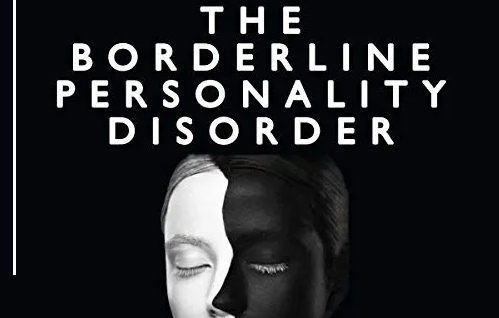Borderline Personality Disorder

What Is Borderline personality disorder?
Borderline personality disorder (BPD) is a mental health condition characterized by poor self-image, a feeling of emptiness, and great difficulty coping with being alone. People with this disorder have highly reactive and intense moods, and unstable relationships. Their behavior can be impulsive. They are also more likely than average to attempt or commit suicide. Sometimes, without intending to commit suicide, they harm themselves (for example, cutting or burning) as a form of self-punishment or to combat an empty feeling.
When stressed, people with borderline personality disorder may develop psychotic-like symptoms. They experience a distortion of their perceptions or beliefs rather than a distinct break with reality. Especially in close relationships, they tend to misinterpret or amplify what other people feel about them. For example, they may assume a friend or family member is having extremely hateful feelings toward them, when the person may be only mildly annoyed or angry.
It’s estimated that 1.4% of the adult U.S. population experiences BPD. Nearly 75% of people diagnosed with BPD are women. Recent research suggests that men may be equally affected by BPD, but are commonly misdiagnosed with PTSD or depression.
What causes borderline personality disorder?
Mental health experts don’t know exactly what causes BPD. Some studies have shown it may be passed down in families. Your social and cultural surroundings may also play a part. For example, you may be at higher risk for BPD if you are part of a community with unstable relationships. People are at a higher risk for getting borderline personality disorder if they have suffered from abuse or neglect. Living with parents or guardians who have a history of substance use disorder or criminal activity may increase the risk as well.
Borderline personality disorder Vs. bipolar disorder
The difference between borderline personality disorder and bipolar disorder is the wide fluctuations in mood and behavior. In BPD, mood and behavior change rapidly in response to significant stress, especially when interacting with other people, whereas in bipolar disorder, moods are more sustained and less reactive. People with bipolar disorder also have significant changes in energy and activity, unlike those with BPD.
Types of borderline personality disorder
According to field expert Theodore Millon, there are four different types of borderline personality disorder namely:
High-functioning borderline personality disorder: also known as discouraged or Quiet BPD is a subtype of BPD that can result in keeping negative emotions hidden. Characteristics of high-functioning BPD include Perfectionism and the need for control.
Impulsive borderline personality disorder: Those experiencing impulsive BPD may engage in such behaviors to satisfy their own urges or desire for immediate gratification, to connect with others, or to get others’ attention, even though such attention tends to be superficial vs. deep or meaningful.
Petulant borderline personality disorder (BPD): is a subset of borderline personality disorder that’s marked by dramatic mood swings, passive-aggressive behavior, irritability, low self-esteem, and defiance.
Self-destructive borderline: Those experiencing self-destructive borderline personality disorder lack a stable sense of self, and they are so dependent on others that their fear of abandonment often runs out of control. Men and women with self-destructive borderline symptoms are frequently moody, bitter, and filled with anger they may or may not express.
Someone suffering from BPD may or may not fall into one of these subcategories, and some may even fall into more than one category. Over time, these symptoms can change and manifest differently as well.
Signs and Symptoms of Borderline Personality Disorder
People with borderline personality disorder may experience intense mood swings and feel uncertainty about how they see themselves. Their feelings for others can change quickly, and swing from extreme closeness to extreme dislike. These changing feelings can lead to unstable relationships and emotional pain.
People with borderline personality disorder also tend to view things in extremes, such as all good or all bad. Their interests and values can change quickly, and they may act impulsively or recklessly.
Other signs or symptoms may include:
• Efforts to avoid real or perceived abandonment, such as plunging headfirst into relationships—or ending them just as quickly.
• A pattern of intense and unstable relationships with family, friends, and loved ones.
• A distorted and unstable self-image or sense of self.
• Impulsive and often dangerous behaviors, such as spending sprees, unsafe sex, substance abuse, reckless driving, and binge eating. Please note: If these behaviors happen mostly during times of elevated mood or energy, they may be symptoms of a mood disorder and not borderline personality disorder.
• Self-harming behavior, such as cutting.
• Recurring thoughts of suicidal behaviors or threats.
• Intense and highly variable moods, with episodes lasting from a few hours to a few days.
• Chronic feelings of emptiness.
• Inappropriate, intense anger or problems controlling anger.
• Feelings of dissociation, such as feeling cut off from oneself, observing oneself from outside one’s body, or feelings of unreality.
Not everyone with borderline personality disorder may experience all of these symptoms. The severity, frequency, and duration of symptoms depend on the person and their illness.
Treatment
An effective treatment plan should include your preferences while also addressing any other co-existing conditions you may have. Examples of treatment options include psychotherapy; medications; and group, peer and family support. The overarching goal of treatment is for a person with BPD to increasingly self-direct their own treatment plan as they learn what works and what doesn’t.
• Psychotherapy—such as dialectical behavioral therapy (DBT), cognitive behavioral therapy (CBT) and psychodynamic psychotherapy—is the first line of choice for BPD. Learning ways to cope with emotional dysregulation in a therapeutic setting is often the key to long-term improvement for those experiencing BPD.
• Medications may be instrumental to a treatment plan, but there is no one medication specifically made to treat the core symptoms of BPD. Rather, several medications can be used off-label to treat various symptoms. For example, mood stabilizers and antidepressants help with mood swings and dysphoria. And for some, low-dose antipsychotic medication may help control symptoms such as disorganized thinking.
• Short-term hospitalization may be necessary during times of extreme stress, and/or impulsive or suicidal behavior to ensure safety.





